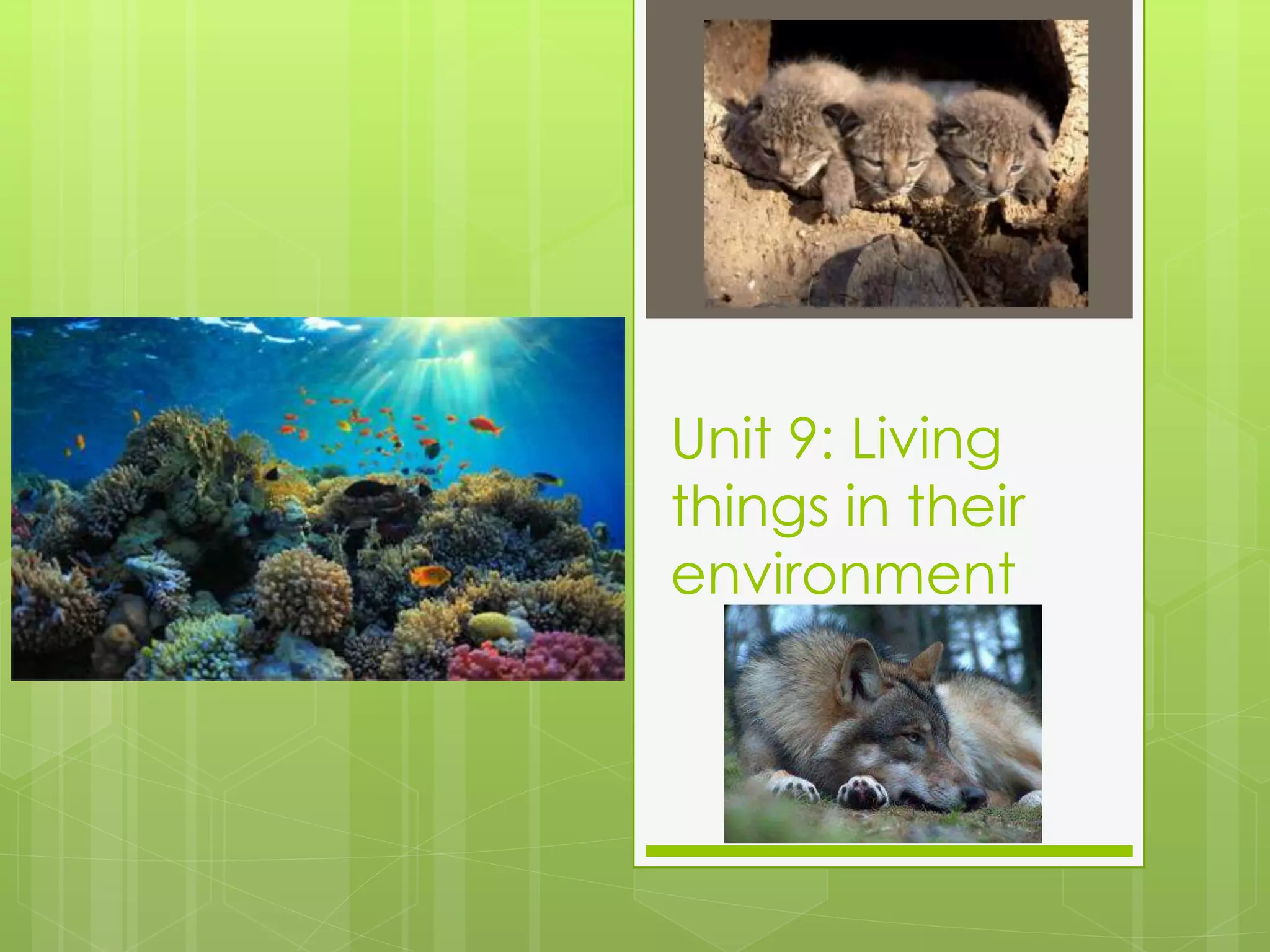This document provides an overview of living things in their environment. It discusses environmental factors, adaptations of organisms, how organisms change their environment, populations, and communities. Specifically, it defines abiotic and biotic factors, limiting factors, and different types of adaptations including morphological, physiological, and behavioral adaptations. It also describes population dynamics including exponential and stationary growth phases. Finally, it examines community concepts such as ecological succession, soil composition, and interspecific relationships including mutualism, parasitism, predation, and competition.





















































